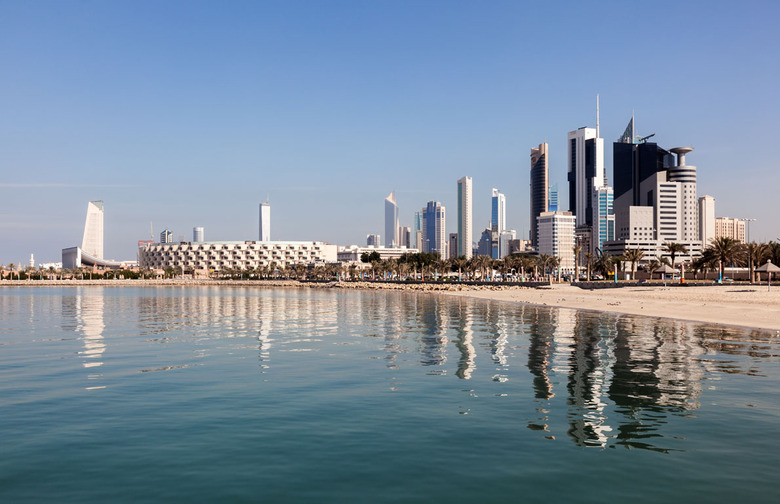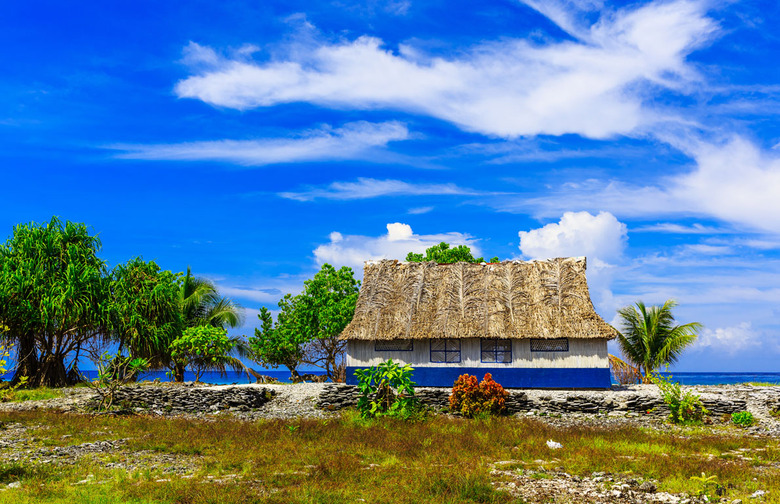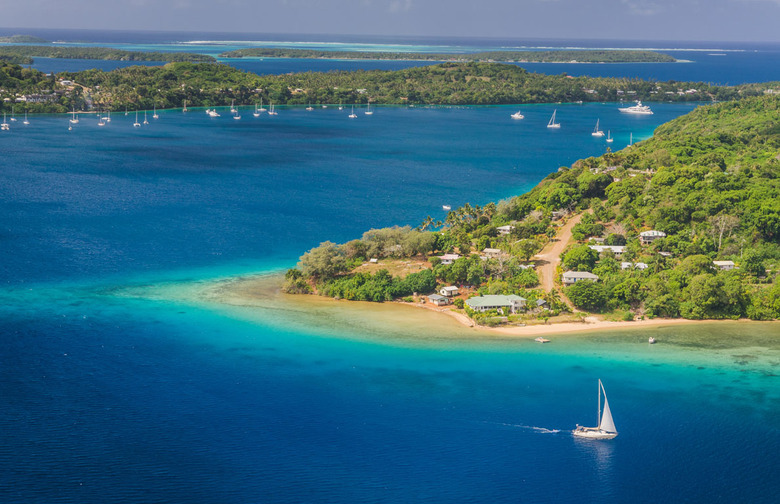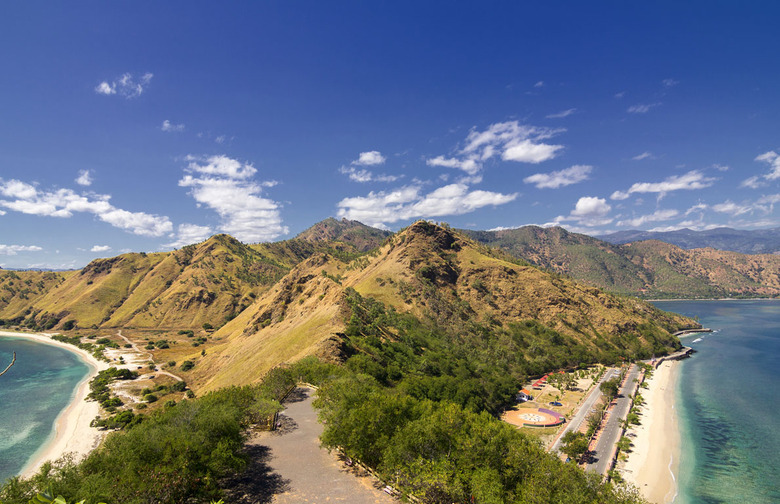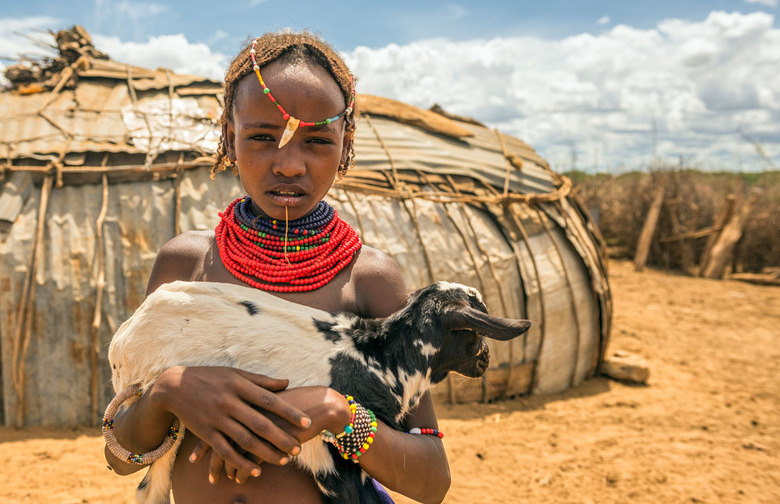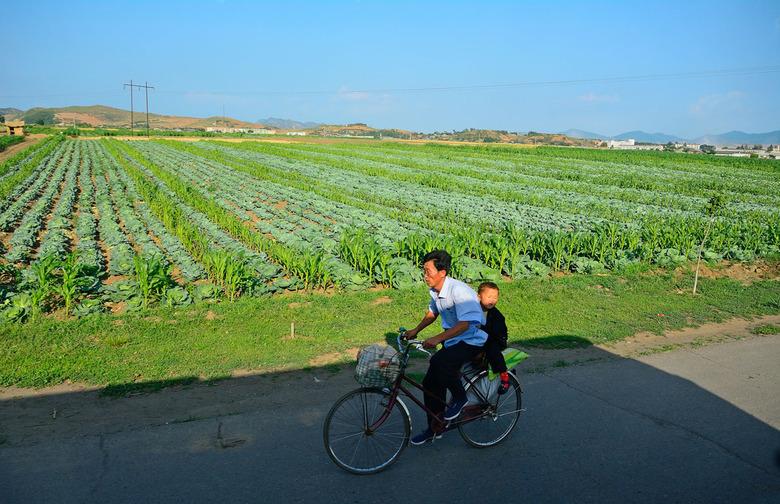The World's 5 Fattest And 5 Thinnest Countries And How They Got That Way (Slideshow)
As recently as 2012, Qatar was ranked as the fattest nation in the world, and it's still very high on the list. 77.1 percent of the population is currently listed as overweight and 17 percent suffer from diabetes — with the average onset age dropping rapidly. The cause is obvious; while Qatar was becoming the fattest nation, it was (and still is) also the richest nation, thanks to its enormous oil reserves. However, for a country that's smaller than Connecticut but has a million more people, work is hard to come by, and most people lead sedentary lifestyles. This is compounded by the lack of pedestrian-friendly cities and reliance on cars for transportation, and also the fact that fast food has made its way into Qatar, and is adored by the locals. Since food is often consumed communally, portion control is also a huge factor in the country's current health crisis.
Fattest: #4 Kuwait
A few decades ago, Kuwait's spot on this list would have been baffling. It was traditionally a farming country, whose residents often performed manual labor, worked on farms, and ate fresh, local food. However, Kuwait's large oil reserves have made the nation quite prosperous, and the change means the people are working less and able to spend more money. Additionally, fast food chains came over with the arrival of U.S. troops during the first Gulf War — and the restaurants were so popular that they stayed. Now McDonald's and Pizza Hut are mainstays of the country and its diet. In fact, it's here that Pizza Hut introduced a pie made with a crust of mini cheeseburgers. While dining at these joints is now understood to be part of an unhealthy lifestyle, it was originally seen as a luxury, similar to how we might view an outing at a full-service restaurant — which understandably led to the current overweight/obesity rate of 78.1 percent.
Fattest: #3 Kiribati
In the past, the health problems of Kiribati (an island republic in the Central Pacific) mostly stemmed from consumption of undercooked seafood, improper food storage facilities, and bacterial contamination of fresh water. The solution? Replacing these foods and drinks with packaged and sealed items. Although this seemed like a good idea at first, it actually caused even more health issues, as the new processed, high-calorie food shocked the local diets and caused the weight of residents to soar, leaving them with a current overweight/obesity rate of 79.1 percent. Kiribati residents also live notoriously sedentary lifestyles — and over half the population smokes.
What would happen if you took all the processed foods out of your diet? Click here to find out.
Fattest: #2 American Samoa
Although the WHO lists American Samoa's overweight and obesity rate at 84 percent, some health officials claim it could be as high as 94 percent. The situation is so out-of-hand that one airline, Samoa Air, has actually made locals stand on scales with their luggage so they can pay according to weight. The main cause is the cost of food, which can get rather expensive when it comes to quality meat and exotic produce since almost everything needs to be imported — with one of the only cheap alternatives being fast food, which, as is the case in most of the world, is quite cheap. The government of American Samoa is attempting to get their people in shape via public service announcements and healthy eating education in schools in order to save future generations, but there's still a lot of work to be done; a study recently found that by the age of 15 months, 30 to 40 percent of babies are already classified as overweight.
Want to learn more about the childhood obesity epidemic? Click here for additional info.
Fattest: #1 Tonga
When it comes to the battle of the bulge, Tonga wins — or loses, depending on how you look at it. With a shocking 86.1 percent of the Polynesian state's population clocking in as overweight or obese, it's no wonder their type 2 diabetes rate sits firmly around 40 percent. Traditionally, the local island diet consisted of fish, root vegetables, and coconuts, but in the middle of the twentieth century, things began to change. Offcuts of meat — like turkey tails from the U.S. and mutton flaps from New Zealand — began arriving in the region, along with sugary drinks. Although seen as luxury items, the meat was actually quite cheap, and thus became immensely popular. However, the quality was low , and in the case of mutton flaps (the oft-discarded portion of ribs connected to the high-quality sections), shockingly fatty. Since the country lacked education regarding healthy foods up until recent decades (and also considered "thin" as being synonymous with "hungry" and the ability to drink soda as a sign of success), the problem ballooned, and so did the population. By 1973, seven percent of the population had weight-related health issues. Today, it is over five times that amount.
Shockingly, people around the world are now drinking less soda. Click here for the story.
Thinnest: #5 Madagascar
As much as we'd like to imagine that the residents of Madagascar are thin because they're constantly running around with a funny group of talking animals, this unfortunately isn't the case. Locals are seriously underweight from birth (the country is also fifth in the world in regard to underweight children), and nearly a quarter of Madagascar's population live in areas highly prone to natural disasters like floods, droughts, and cyclones. Coupled with deforestation and poor land management, nearly 36 percent of the rural population suffers from food insecurity, almost two million children are stunted because of chronic malnutrition, and only 11.1 percent are overweight or obese. However, things could actually be a lot worse. Health services have shown an improvement over the last 20 years, with immunizations rates and life expectancy estimates slowly rising, and AIDS and malaria infection rates slowly falling.
Thinnest: #4 Vietnam
The state of health in Vietnam is currently a mixed bag, which is both helping and harming the average weight of its citizens. First and foremost, government funding of healthcare has been notoriously low for years, leading to shortages of doctors, nurses, hospitals, clinics, and — consequently — health information, leading to malnourishment, especially in rural areas. Improvements are being made, and the country's life expectancy rate has increased to a healthy 76 years for women and 72 for men recently, mostly due to healthy diets of residents in urban and suburban areas. Overall, Vietnamese cuisine is low in fat and sugar, generally gluten-free, and packed with vitamins, minerals, and antioxidants, which is one of the positive reasons that Vietnam's overweight/obesity rate is only 13.1 percent. A bowl of pho, for instance, generally only contains between 300 and 600 calories. Plus, you can count on most of the food to be extremely fresh.
Thinnest: #3 Ethiopia
When it comes to hunger, malnourishment, poor sanitary conditions, and high mortality rates in children, people often think of Ethiopia as one of the worst countries. This is unfortunately absolutely accurate. Ethiopia is generally ranked second in the world for malnourishment and somewhere in the top 10 for poorest, and there simply isn't enough food to go around, keeping the overweight/obesity rate at only 6.1 percent. Things are slowly improving, especially in the cities, where health statistics are better across the board. For the people lucky enough to have enough to eat, the food they consume is quite healthy, thanks to the large amount of agriculture — which makes up almost 41 percent of the GDP. Meals are well-balanced, with meat (often in stew form), vegetable side dishes, and crIepe-like injera or dumpling-like stuffed pouches (called tihlo) all being represented on plates. Traditional Ethiopian cuisine doesn't include pork or shellfish of any kind for religious reasons.
Check out these 11 incredible flatbreads from around the world.
Thinnest: #2 East Timor
Like many Southeast Asian countries, East Timor has a diet that mostly features local pork, fish, basil, tamarind, legumes, corn, rice, root vegetables, and tropical fruit. Thus, the overweight/obesity rate has remained extremely low at 4.9 percent. Unfortunately, this number was also helped by widespread malnourishment in rural areas, and frequent unrest in the country. This led to the displacement of hundreds of thousands of people who became refugees, and thus lacked adequate access to food, water, and healthcare. However, things are looking up a bit; the United Nations ended its peacekeeping mission in 2012, and a 2003 Cuban-East Timorese training program has been working toward providing the country with more doctors per capita than any other Southeast Asian country.
Thinnest: #1 North Korea
Don't mention it to the exalted leader Kim Jong-un, but his people are literally starving. They're poor (earning an average of only $2-30 per month), their every move is monitored and controlled, and the government constantly mismanages the economy by buying weapons for a hypothetical war it is obsessed with, but would never win. North Korean food, to its credit, is relatively healthy (and includes dishes like rice, noodles, corn porridge, kimchi, soybean sausage, and bulgogi), so that deserves part of the credit for the population's shockingly-low 4.4 percent overweight/obesity rate. Yet an even bigger factor is the ongoing famine, which caused the deaths of as many as 3.5 million citizens in the last 20 years. As long as Kim Jong-un keeps his people living in a world that's part Truman Show-like fantasyland and part-Nazi Germany, there's really no hope of change anytime soon.
Want to know more about what they eat in North Korea? Click here to find out.

